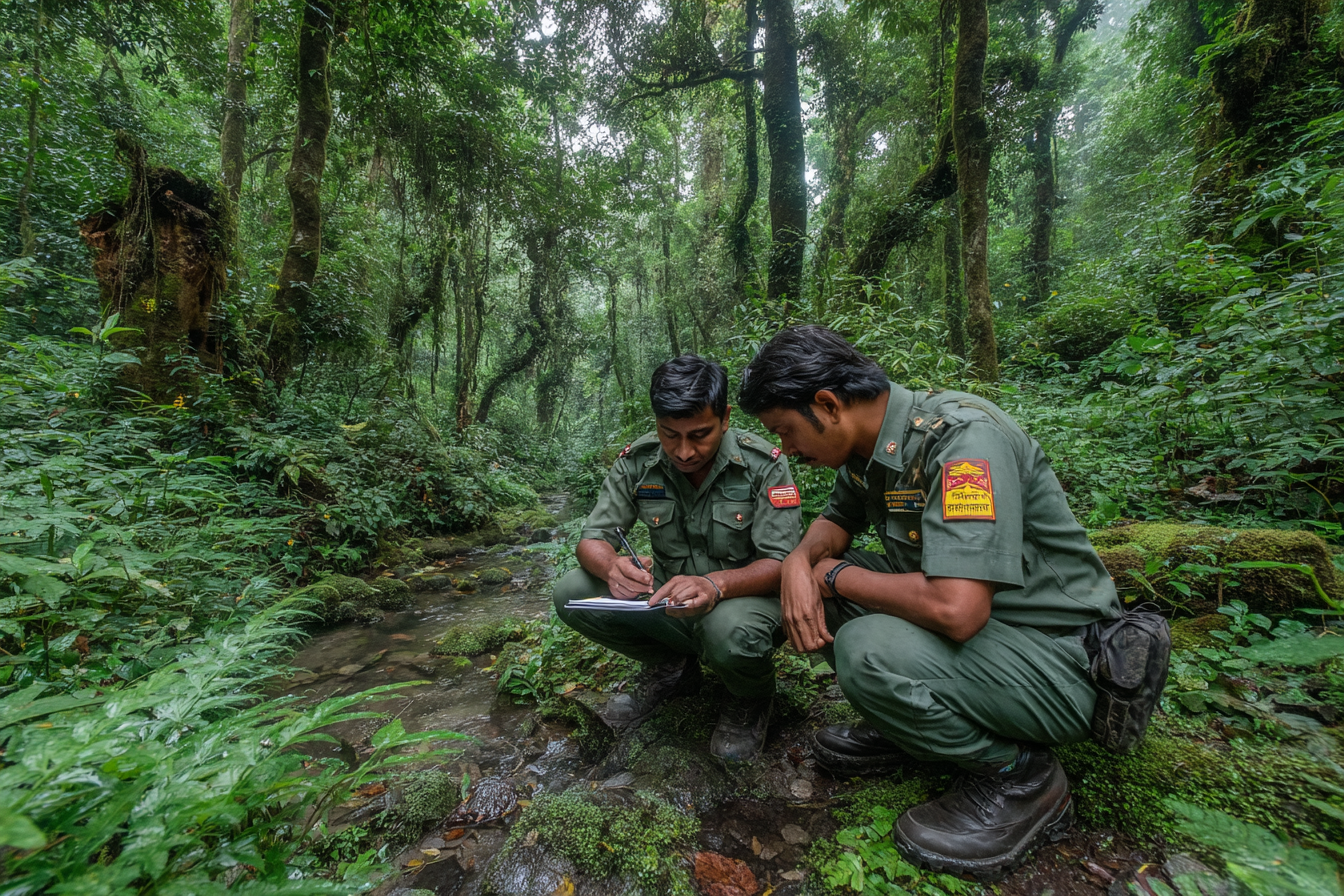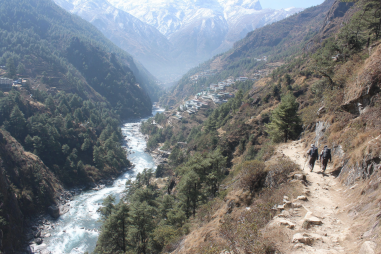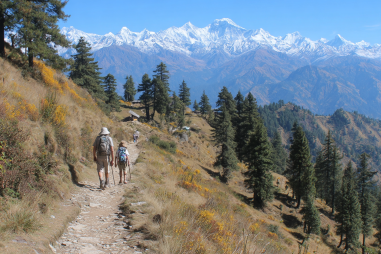Chitwan National Park, nestled in the southern foothills of Nepal’s Himalayas, is a beacon of hope and dedication in the realm of wildlife conservation. This verdant sanctuary, a UNESCO World Heritage Site, not only boasts an incredible array of biodiversity but stands as a testament to ongoing efforts to protect endangered species and their habitats. The story of Chitwan is one of collaboration, resilience, and a shared commitment to preserving Nepal’s natural heritage. As travelers and nature lovers, understanding these conservation efforts can deepen appreciation and inspire responsible tourism that supports this vital cause.
The Importance of Conservation in Chitwan
The importance of conservation in Chitwan National Park cannot be overstated. The park covers an area of approximately 952 square kilometers and encompasses lush forests, grasslands, rivers, and wetlands. This diverse ecosystem supports some of the most remarkable wildlife found in Nepal. Historically, the region faced rampant deforestation and hunting, which severely threatened its biodiversity. Today, conservation efforts help to revive and preserve the delicate balance between nature and wildlife.
Chitwan’s conservation significance extends beyond protecting individual species. The park contributes to maintaining ecological integrity, sustaining local livelihoods, and supporting Nepal’s tourism industry. By conserving wildlife and forests, Chitwan plays a critical role in carbon sequestration and water regulation, which are vital for climate resilience. Ultimately, the park serves as a living laboratory for sustainable coexistence between humans and nature.
Key Endangered Species and Threats
Chitwan National Park is home to several endangered and vulnerable species, making conservation efforts all the more crucial. Among its most famous inhabitants are the Bengal tiger, one-horned rhinoceros, Asian elephant, and the elusive leopard. Apart from these charismatic megafauna, the park shelters myriad bird species, reptiles, amphibians, and insects, forming a vibrant and interdependent ecosystem.
Despite the sanctuary’s protected status, wildlife faces ongoing threats:
- Poaching: Illegal hunting of rhinos and tigers for their horns and skins remains a serious concern, driven by lucrative black markets.
- Habitat Encroachment: Human population growth and agricultural expansion around the park boundaries lead to habitat fragmentation and loss.
- Human-Wildlife Conflict: As animals like elephants and rhinos sometimes stray into farmland or villages, conflicts can result in injury, crop damage, or retaliatory killings.
- Climate Change: Changes in weather patterns and river flows can alter habitats and food availability, affecting wildlife survival.
Addressing these challenges requires a multifaceted conservation approach involving patrols, community engagement, and scientific research.
Park Management and Anti-Poaching Measures
The management of Chitwan National Park is crucial to its success as a conservation area. The Department of National Parks and Wildlife Conservation of Nepal, responsible for overseeing park activities, implements stringent anti-poaching measures and habitat management strategies aimed at protecting wildlife.
To combat poaching, the park employs well-trained and equipped forest rangers who conduct regular patrols and surveillance throughout the area. Advanced technology, such as camera traps and GPS tracking, supplements these efforts to monitor animal movements and detect suspicious activity. Collaborative intelligence-sharing networks between park authorities, police, and local communities help in intercepting poachers and dismantling illegal wildlife trade operations.
Habitat management includes controlled grassland burning to promote growth of nutritious forage, managing invasive species, and maintaining water resources crucial for animals during dry seasons. Ecotourism guidelines enforced by the park ensure that tourist activities do not disturb sensitive habitats, while revenue generated from entrance fees supports conservation and community projects.
Community Involvement and Education
One of the strongest pillars of Chitwan’s conservation success is the active involvement of local communities. Rather than excluding residents from the park area, authorities have fostered partnerships that empower villagers to become conservation stakeholders. This approach enhances protection efforts and improves the quality of life for people living near the park.
Community-based programs focus on:
- Promoting sustainable livelihoods like eco-friendly farming, handicrafts, and guided nature tours.
- Offering education about wildlife conservation and the ecological importance of the park.
- Running anti-poaching awareness drives and involving locals in forest guard roles.
- Mitigating human-wildlife conflict with measures such as early warning systems and crop protection techniques.
Educational initiatives extend to schools, where children learn about Nepal’s rich biodiversity and their role in preserving it. Additionally, the park organizes workshops and training sessions to build conservation capacity among community members, ensuring the legacy of protection continues.
How Tourists Can Contribute Responsibly
Visitors to Chitwan National Park play an essential role in supporting conservation efforts. Responsible tourism not only minimizes negative impacts on the environment but also generates vital funds and raises awareness. Here are some practical ways tourists can contribute:
- Choose Eco-friendly Lodging: Stay at lodges or resorts committed to sustainable practices, such as using renewable energy and supporting local communities.
- Follow Park Rules: Stick to designated trails, avoid disturbing wildlife, and adhere to guidelines set by park authorities and tour guides.
- Participate in Community Programs: Engage in cultural experiences that benefit local people, such as visiting handicraft centers or joining community-led nature walks.
- Support Conservation Funds: Donate to organizations working in Chitwan or contribute through park entry fees and eco-tourism activities.
- Practice Ethical Wildlife Viewing: Maintain a respectful distance, avoid feeding animals, and refrain from using flash photography.
By traveling thoughtfully, tourists become ambassadors for conservation and help ensure the park’s treasures endure for future generations.
Protecting the Legacy of Chitwan National Park
As a pioneer in wildlife conservation, Chitwan National Park exemplifies the profound impact of coordinated efforts across government, communities, and visitors. Safeguarding its forests and species is a continuous journey requiring vigilance, innovation, and care. The strides made so far underline the power of collective action to reverse environmental degradation and revive natural heritage.
For travelers and nature enthusiasts, understanding the intricate conservation landscape of Chitwan enhances appreciation and responsibility. Supporting these efforts through mindful tourism is one of the most meaningful ways to contribute. Together, we can help preserve Nepal’s extraordinary biodiversity, ensuring that Chitwan remains a thriving sanctuary for both wildlife and people for decades to come.







